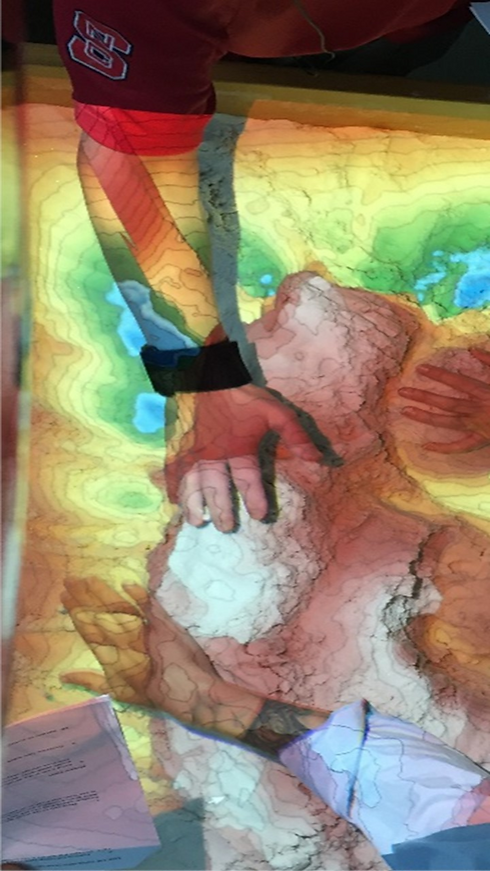
Using Biometrics to Understand Student Engagement

With technology rapidly evolving and becoming more accessible, so has educational technology. A popular learning tool that is becoming increasingly popular in geoscience courses are augmented relation (AR) sandboxes. Though these tools are becoming more affordable and accessible, research on the learning benefits of using the AR sandbox has been mixed. One of the biggest challenges to teaching with the AR sandbox is the logistics of allowing students to have prolonged or repeated exposure.
To better understand the best way to implement the use of an AR sandbox into introductory geology labs, we studied student engagement using different teaching activities in the sandbox. Engagement is predicate to learning, so by studying engagement we are able to devise more effective teaching strategies. To measure engagement, you utilized skin biosensors worn on the wrist to measure skin conductance. Skin conductance is a measure of sympathetic nervous system response, which serves as a proxy for engagement. This novel approach is a new and exciting way for researchers to study engagement.
Our work found that structured activities (i.e. giving students specific tasks to perform) were more engaging than unstructured freeplay or semi-structured tasks (i.e. asking students to make and write down observations about what the sandbox was demonstrating). Additionally, we found a relationship between spatial thinking skills and engagement as well as a relationship between interaction among students (obtained from video data) and engagement. This work is currently under review in the Journal of Geography and Higher Education
I have also collaborated on a project using skin sensors to understand engagement in active learning vs. traditional learning large introductory biology classes as well as a project studying the effect of watching place-based climate change videos on emotional engagement.